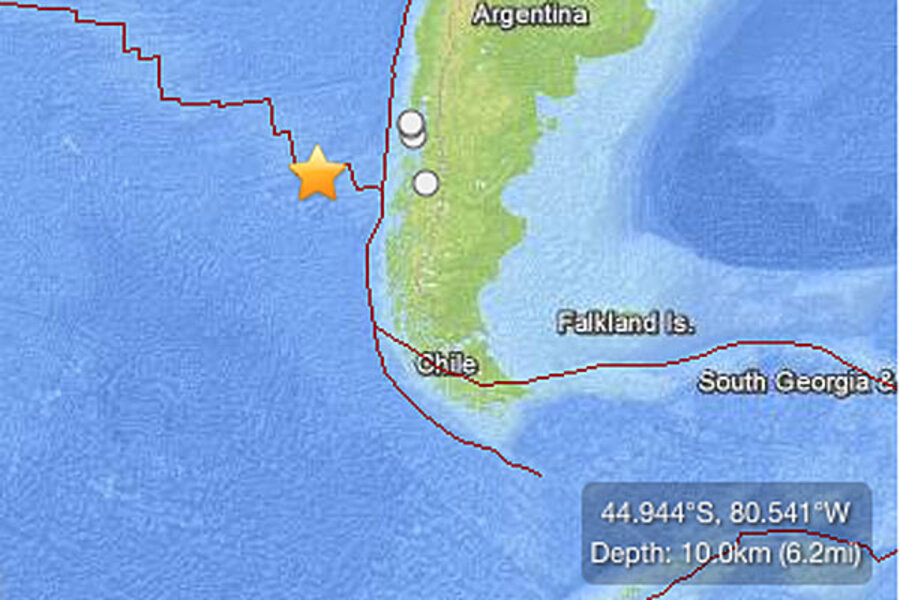6.8 Chile earthquake strikes off the coast
Loading...
| Santiago, Chile
The U.S. Geological Survey says a magnitude-6.5 earthquake has struck off the coast of Chile. The USGS initially reported at 6.8 earthquake.
The quake was recorded at 5:49 a.m. local time (EDT; 0949 GMT) Monday, at a shallow depth of 10 kilometers (6.2 miles), some 600 kilometers (370 miles) from the city of Puerto Quellon. No tsunami warning was issued.
Chile's naval seismology office says it was not felt on land. U.S. seismologists originally estimated the magnitude at 6.8.
Chile is one of the world's most earthquake-prone countries. A magnitude-8.8 quake and the tsunami it unleashed in 2010 killed 551 people and destroyed 220,000 homes. It was so strong it changed time, shortening the Earth's day slightly by changing the planet's rotation.
The quakes in the area are the result of the collision of plates, specifically between the subducting Nazca plate and the South America plate, where the oceanic crust and lithosphere of the Nazca plate begin their descent into the mantle beneath South America, according to the USGS.
"Most of the large earthquakes in South America are constrained to shallow depths of 0 to 70 km resulting from both crustal and interplate deformation. Crustal earthquakes result from deformation and mountain building in the overriding South America plate and generate earthquakes as deep as approximately 50 km. Interplate earthquakes occur due to slip along the dipping interface between the Nazca and the South American plates. Interplate earthquakes in this region are frequent and often large, and occur between the depths of approximately 10 and 60 km. Since 1900, numerous magnitude 8 or larger earthquakes have occurred on this subduction zone interface that were followed by devastating tsunamis, including the 1960 M9.5 earthquake in southern Chile, the largest instrumentally recorded earthquake in the world."
Copyright 2013 The Associated Press.







